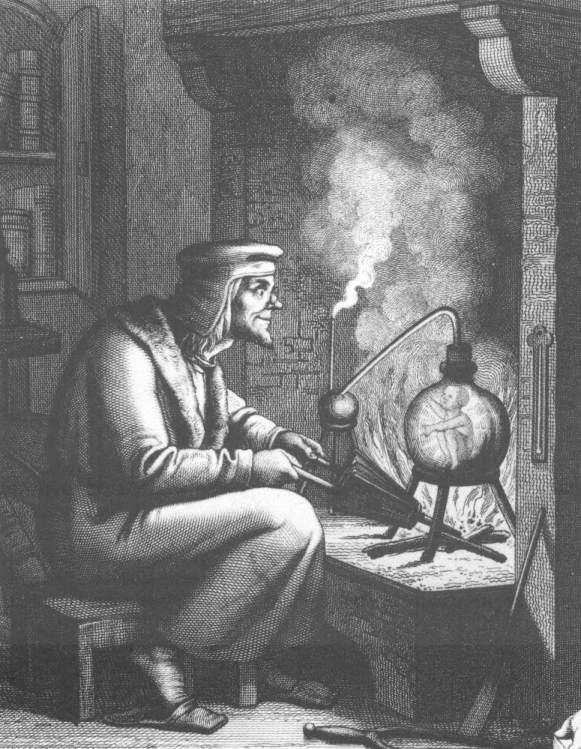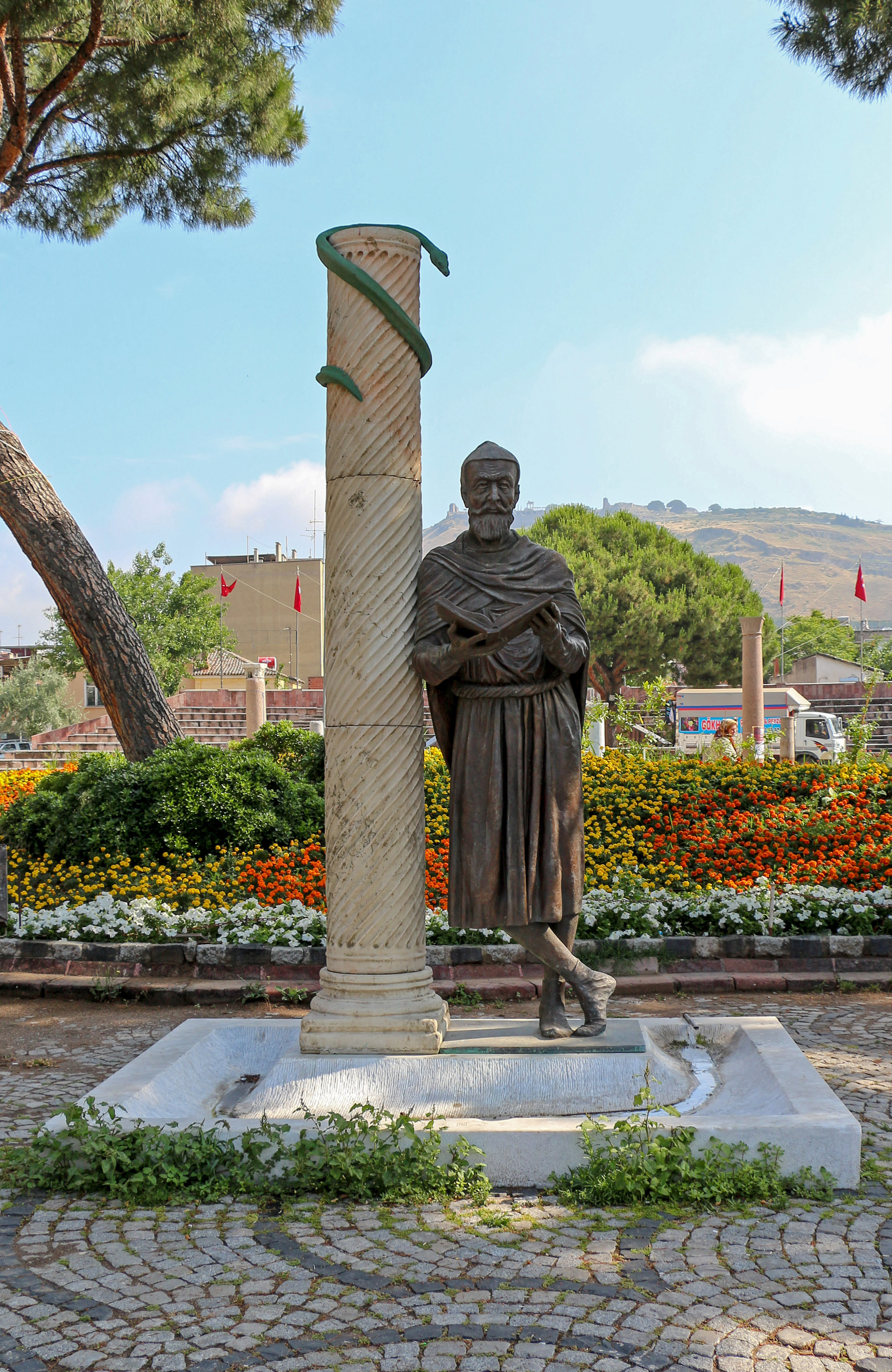|
Preformationism
In the history of biology, preformationism (or preformism) is a formerly popular theory that organisms develop from miniature versions of themselves. Instead of assembly from parts, preformationists believed that the form of living things exist, in real terms, prior to their development.Maienschein, Jane,Epigenesis and Preformationism, The Stanford Encyclopedia of Philosophy (Fall 2008 Edition), Edward N. Zalta (ed.). Preformationists suggested that all organisms were created at the same time, and that succeeding generations grow from homunculi, or animalcules, that have existed since the beginning of creation, which is typically defined by religious beliefs. EpigenesisAccording to the Oxford English Dictionary: It is also worth quoting this adumbration of the definition given there (viz., "The formation of an organic germ as a new product"): (or neoformism), then, in this context, is the denial of preformationism: the idea that, in some sense, the form of living things ... [...More Info...] [...Related Items...] OR: [Wikipedia] [Google] [Baidu] |
Embryology
Embryology (from Ancient Greek, Greek ἔμβρυον, ''embryon'', "the unborn, embryo"; and -λογία, ''-logy, -logia'') is the branch of animal biology that studies the Prenatal development (biology), prenatal development of gametes (sex cells), fertilization, and development of embryos and fetuses. Additionally, embryology encompasses the study of congenital disorders that occur before birth, known as teratology. Early embryology was proposed by Marcello Malpighi, and known as preformationism, the theory that organisms develop from pre-existing miniature versions of themselves. Aristotle proposed the theory that is now accepted, Epigenesis (biology), epigenesis. Epigenesis (biology), Epigenesis is the idea that organisms develop from seed or egg in a sequence of steps. Modern embryology developed from the work of Karl Ernst von Baer, though accurate observations had been made in Italy by anatomists such as Aldrovandi and Leonardo da Vinci in the Renaissance. Comparative ... [...More Info...] [...Related Items...] OR: [Wikipedia] [Google] [Baidu] |
Epigenesis (biology)
In biology, epigenesis (or, in contrast to preformationism, neoformationism) is the process by which plants, animals and fungi develop from a seed, spore or egg through a sequence of steps in which cells differentiate and organs form. Aristotle first published the theory of epigenesis in his book ''On the Generation of Animals.'' Although epigenesis appears to be an obvious fact in today's genetic age, historically, creationist theories of life's origins hindered its acceptance. However, during the late 18th century an extended and controversial debate among biologists finally led epigenesis to eclipse the long-established preformationist view.Conference, Abstracts of papers presented. The embryologist Caspar Friedrich Wolff refuted preformationism in 1759 in favor of epigenesis, but this did not put an end to preformationism. See also * Epigenetics * Epigenesis (other) References External links Aristotle: ''On the Generation of Animals The ''Generation ... [...More Info...] [...Related Items...] OR: [Wikipedia] [Google] [Baidu] |
Homunculus
A homunculus ( , , ; "little person", : homunculi , , ) is a small human being. Popularized in 16th-century alchemy and 19th-century fiction, it has historically referred to the creation of a miniature, fully formed human. The concept has roots in preformationism as well as earlier folklore and alchemic traditions. The term lends its name to the cortical homunculus, an image of a person with the size of the body parts distorted to represent how much area of the cerebral cortex of the brain is devoted to it. History Alchemy file:Paracelsus219.jpg, upParacelsus is credited with the first mention of the homunculus in ''De homunculis'' (c. 1529–1532), and ''De natura rerum'' (1537). During medieval and early modern times, it was thought that homunculus, an artificial humanlike being, could be created through alchemy. The homunculus first appears by name in alchemical writings attributed to Paracelsus (1493–1541). ''De natura rerum'' (1537) outlines his method for c ... [...More Info...] [...Related Items...] OR: [Wikipedia] [Google] [Baidu] |
Epigenetics
In biology, epigenetics is the study of changes in gene expression that happen without changes to the DNA sequence. The Greek prefix ''epi-'' (ἐπι- "over, outside of, around") in ''epigenetics'' implies features that are "on top of" or "in addition to" the traditional (DNA sequence based) genetic mechanism of inheritance. Epigenetics usually involves a change that is not erased by cell division, and affects the regulation of gene expression. Such effects on cellular and physiological traits may result from environmental factors, or be part of normal development. The term also refers to the mechanism of changes: functionally relevant alterations to the genome that do not involve mutation of the nucleotide sequence. Examples of mechanisms that produce such changes are DNA methylation and histone modification, each of which alters how genes are expressed without altering the underlying DNA sequence. Further, non-coding RNA sequences have been shown to play a key role in the r ... [...More Info...] [...Related Items...] OR: [Wikipedia] [Google] [Baidu] |
Pythagoras
Pythagoras of Samos (; BC) was an ancient Ionian Greek philosopher, polymath, and the eponymous founder of Pythagoreanism. His political and religious teachings were well known in Magna Graecia and influenced the philosophies of Plato, Aristotle, and, through them, Western philosophy. Modern scholars disagree regarding Pythagoras's education and influences, but most agree that he travelled to Croton in southern Italy around 530 BC, where he founded a school in which initiates were allegedly sworn to secrecy and lived a communal, ascetic lifestyle. In antiquity, Pythagoras was credited with mathematical and scientific discoveries, such as the Pythagorean theorem, Pythagorean tuning, the five regular solids, the theory of proportions, the sphericity of the Earth, the identity of the morning and evening stars as the planet Venus, and the division of the globe into five climatic zones. He was reputedly the first man to call himself a philosopher ("lover of wi ... [...More Info...] [...Related Items...] OR: [Wikipedia] [Google] [Baidu] |
Aristotle
Aristotle (; 384–322 BC) was an Ancient Greek philosophy, Ancient Greek philosopher and polymath. His writings cover a broad range of subjects spanning the natural sciences, philosophy, linguistics, economics, politics, psychology, and the arts. As the founder of the Peripatetic school of philosophy in the Lyceum (classical), Lyceum in Athens, he began the wider Aristotelianism, Aristotelian tradition that followed, which set the groundwork for the development of modern science. Little is known about Aristotle's life. He was born in the city of Stagira (ancient city), Stagira in northern Greece during the Classical Greece, Classical period. His father, Nicomachus (father of Aristotle), Nicomachus, died when Aristotle was a child, and he was brought up by a guardian. At around eighteen years old, he joined Plato's Platonic Academy, Academy in Athens and remained there until the age of thirty seven (). Shortly after Plato died, Aristotle left Athens and, at the request ... [...More Info...] [...Related Items...] OR: [Wikipedia] [Google] [Baidu] |
Galen
Aelius Galenus or Claudius Galenus (; September 129 – AD), often Anglicization, anglicized as Galen () or Galen of Pergamon, was a Ancient Rome, Roman and Greeks, Greek physician, surgeon, and Philosophy, philosopher. Considered to be one of the most accomplished of all medical researchers of Ancient history, antiquity, Galen influenced the development of various scientific disciplines, including anatomy, physiology, pathology, pharmacology, and neurology, as well as philosophy and logic. The son of Aelius Nicon, a wealthy Greek architect with scholarly interests, Galen received a comprehensive education that prepared him for a successful career as a physician and philosopher. Born in the ancient city of Pergamon (present-day Bergama, Turkey), Galen traveled extensively, exposing himself to a wide variety of medical theories and discoveries before settling in Ancient Rome, Rome, where he served prominent members of Roman society and eventually was given the position of perso ... [...More Info...] [...Related Items...] OR: [Wikipedia] [Google] [Baidu] |
Realdo Colombo
Matteo Realdo Colombo (c. 1515 – 1559) was an Italian professor of anatomy and a surgeon at the University of Padua between 1544 and 1559. Early life and education Matteo Realdo Colombo or Realdus Columbus, was born in Cremona, Lombardy, the son of an apothecary named Antonio Colombo. Although little is known about his early life, it is known he took his undergraduate education in Milan, where he studied philosophy, and he appears to have pursued his father's profession for a short while afterwards. He left the apothecary's life and apprenticed to the surgeon Giovanni Antonio Lonigo, under whom he studied for 7 years. In 1538 he enrolled in the University of Padua where he was noted to be an exceptional student of anatomy. While still a student, he was awarded a Chair of Sophistics at the university. In 1542 he returned briefly to Venice to assist his mentor, Lonigo. Academic career Realdo Colombo studied philosophy in Milan, and then he trained to be a surgeon for several ... [...More Info...] [...Related Items...] OR: [Wikipedia] [Google] [Baidu] |
William Harvey
William Harvey (1 April 1578 – 3 June 1657) was an English physician who made influential contributions to anatomy and physiology. He was the first known physician to describe completely, and in detail, pulmonary and systemic circulation as well as the specific process of blood being pumped to the brain and the rest of the body by the heart (though earlier writers, such as Realdo Colombo, Michael Servetus, and Jacques Dubois, had provided precursors to some of his theories). Family William's father, Thomas Harvey, was a jurat of Folkestone where he served as mayor in 1600. Records and personal descriptions delineate him as an overall calm, diligent, and intelligent man whose sons “... revered, consulted and implicitly trusted in him...” (they) made their father the treasurer of their wealth when they acquired great estates...(He) kept, employed, and improved their gainings to their great advantage." Thomas Harvey's portrait can still be seen in the central panel ... [...More Info...] [...Related Items...] OR: [Wikipedia] [Google] [Baidu] |
Girolamo Fabrici
Girolamo Fabrici d'Acquapendente, also known as Girolamo Fabrizio or Hieronymus Fabricius (; 20 May 1533 – 21 May 1619), was a pioneering anatomist and surgeon known in medical science as "The Father of Embryology." Life and accomplishments Born in Acquapendente, Latium, Fabricius studied at the University of Padua, receiving a Doctor of Medicine degree in 1559 under the guidance of Gabriele Falloppio. He was a private teacher of anatomy in Padua, 1562–1565, and in 1565, became professor of surgery and anatomy at the university, succeeding Falloppio. In 1594 he revolutionized the teaching of anatomy when he designed the first permanent theater for public anatomical dissections. Julius Casserius (1552–1616) of Piacenza was among Fabricius' students, Anselmus Boetius de Boodt (1550-1632) also received his lessons there in 1586. William Harvey (1578–1657) and Adriaan van den Spiegel (1578–1625) also studied under Fabricius, beginning around 1598. Julius Casserius ... [...More Info...] [...Related Items...] OR: [Wikipedia] [Google] [Baidu] |
Nucleic Acid
Nucleic acids are large biomolecules that are crucial in all cells and viruses. They are composed of nucleotides, which are the monomer components: a pentose, 5-carbon sugar, a phosphate group and a nitrogenous base. The two main classes of nucleic acids are deoxyribonucleic acid (DNA) and ribonucleic acid (RNA). If the sugar is ribose, the polymer is RNA; if the sugar is deoxyribose, a variant of ribose, the polymer is DNA. Nucleic acids are chemical compounds that are found in nature. They carry information in cells and make up genetic material. These acids are very common in all living things, where they create, encode, and store information in every living cell of every outline of life forms, life-form on Earth. In turn, they send and express that information inside and outside the cell nucleus. From the inner workings of the cell to the young of a living thing, they contain and provide information via the nucleic acid sequence. This gives the RNA and DNA their unmistakable 'la ... [...More Info...] [...Related Items...] OR: [Wikipedia] [Google] [Baidu] |





